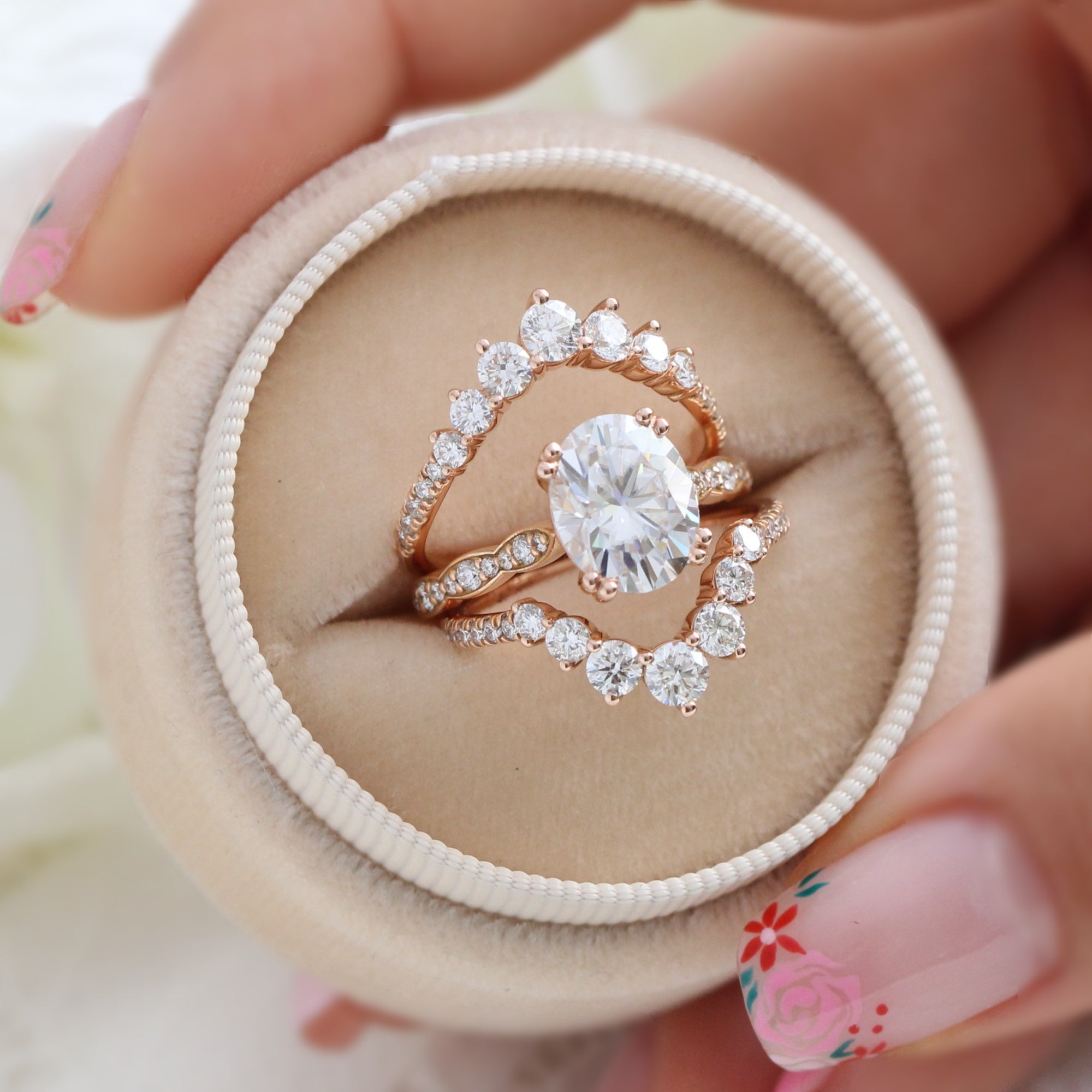
14K vs. 18K Rose Gold: A Side by Side Comparison
Although gold may seem identical to the untrained eye, not all gold is created equal. It's not uncommon for customers to inquire about the disparity between 14K and 18K gold and what the numbers represent. Considering our best-selling items are rose gold rings, we'll delve into a side-by-side analysis of 14K and 18K rose gold.
You’ve probably heard the term karat thrown around. Karat is the unit used to measure the purity of gold. “Pure gold” is 24 karat (of Bruno Mars song fame). It’s not 100% pure—just 99.99%, but that’s the best that can be created. There is no higher form than 24K, so don’t believe any jeweler that would try to sell you otherwise. One karat contains 1/24 pure gold (about 4.17% pure gold).
The higher karat amount, the more pure gold content it contains. Pure 24 karat gold has a bright yellow color and is relatively soft, so it is often used in coins or bars. While it’s pureness is desirable, its softness doesn’t make it ideal for jewelry. To make it durable enough for wear it’s alloyed with other metals—creating lower karat golds like 14k or 18k.
The image below you can see the color difference between a solid gold coin and a solid 14k rose gold band.

14k gold contains about 58% pure gold; the remaining 42% is an alloy of metals such as silver and copper.
18k gold contains about 75% pure gold; the remaining 25% is the alloy.
Now, knowing what they are comprised of, here’s how 14k and 18k rose gold stack up:
Purity & Appearance
As we mentioned, a 14k gold ring contains about 58% pure gold, giving it that distinct yellow hue. To create the rose gold tone, copper is used as the alloy.
Mathematically, 14k rose gold contains about 58% pure gold and 42% copper alloys while a 18k rose gold contains about 75% pure gold and 25% copper alloys. That means the 14k rose gold ring will have a more pinkish tone, while a similar 18k rose gold ring will have more of a yellow cast.
Below is the photo of a side by side comparison of our vintage floral aquamarine rings (colored gemstone) in both 14k and 18k rose gold:
And below is the photo of a side by side comparison of our pear cut moissanite rings (colorless gemstone) in both 14k and 18k rose gold setting:

Now you've seen both colored and colorless stones set in 14k and 18k rose gold setting. It really comes down to choice: scientifically there’s no objectively better option, it’s just what you prefer. If you prefer a more blush-colored engagement ring, 14k rose gold may be right for you. If you prefer a warmer look, you might like the 18k rose gold.
Durability
Gold is a highly sought-after metal for jewelry making due to its exceptional malleability and ductility. However, the higher the purity of the gold, the more vulnerable it is to damage or deformation. To ensure that the jewelry can withstand daily wear and tear, it must be combined with a more robust metal alloy.
Therefore, the higher the concentration of pure gold in a piece of jewelry, the more delicate it becomes. This is why an 18k rose gold ring demands more careful handling than a 14k rose gold ring, as it is more susceptible to scratches and bends.
Of note: compared to rose or yellow gold, white gold has distinct characteristics. It is typically plated with rhodium, which provides an additional layer of protection. As a result, an 18k white gold ring is less prone to wear and tear than an 18k rose or yellow gold ring. We will delve into white gold in a separate post.
Price & Popularity
You may have learned from years of watching movies and TV shows that pure gold is an extremely valuable material, and that the higher its purity, the higher the cost. At La More Design, we offer the option of 14k or 18k gold (in white, yellow, or rose) for any of our engagement rings or wedding bands. Typically, an 18k rose gold ring is priced $200 to $400 higher than a 14k rose gold ring, depending on the thickness and weight of the band.

Typically, 14k rose gold rings are favored due to their affordability, scratch-resistant and durable nature. However, ultimately the decision should be based on your personal preference. Choosing a ring is like choosing a partner - it's important to listen to your heart and select the one that feels perfect for you
FAQs:
Q: Does your rose gold ring have to be re-dipped?
A: All our rose gold rings (14k and 18k) are made in solid rose gold – NOT rose gold plated, so they will NOT need to be re-dipped or re-plated in the future. Just like most things in life, a solid rose gold ring will also need some TLC (Tender Loving Care) to stay pristine. Over time your rose gold ring may show the signs of wear and tear, all it needs is a good re-polishing and cleaning service, and it will look like a brand new ring again!
Q: Do you have the side by side comparison for 14k vs 18k white gold?
A: Yes, we do! Click here to learn more about white gold.
Read more Blog Posts to discover the latest jewelry trends, product launches, and more!


